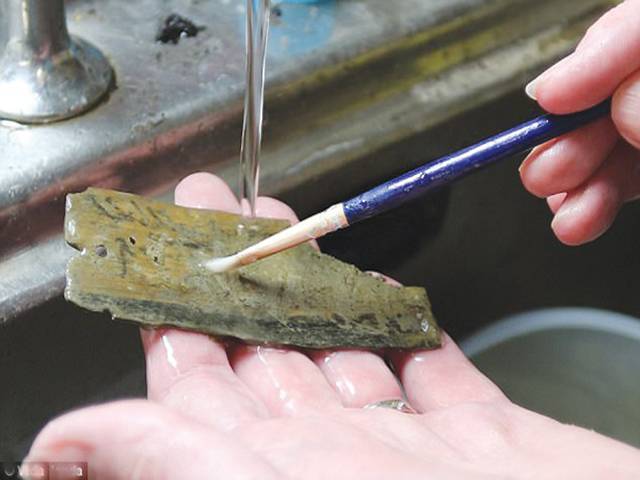LONDON-A hoard of 25 personal letters and lists has been discovered near Hardian’s Wall after they were discarded during the 1st Century AD.
The ink documents were found several metres down in damp earth at the Roman fort of Vindolanda in Northumberland. One of the letters was written by a man called Masclus, who is best known for a previous letter to his Commanding Officers asking for more beer, this time asking for leave from work. These incredibly rare and fragile wafer-thin pieces of wood are often less than 2mm in thickness and about the size of modern day postcards. Experts believe the tablets, which have been preserved in anaerobic soils, were written between 85-92 AD. Some of the letters were complete and others had partial or whole confronting pages.
The new finds, which were found between the first Roman foundations and a farmer’s field, will be scanned with infrared light which will help experts read them. The details of these messages will not be revealed for around three months. Characters and authors of the letters may already be known thanks to previous Vindolanda tablets from the site, and new names will emerge to take their places in the history of Roman Britain. The last cache of Vindolanda tablets were excavated in a bonfire site in 1992 and are considered the most famous documents from the Roman world.
Fragments of the letters had been found from the 1970s onwards. They contain accounts of people having cold feet, wanting more beer and having parties - some of which were written decades before Hadrian’s Wall was built.
Dr Robin Birley who also made tablet discoveries at Vindolanda in 1970’s and 1980’s commented ‘some of these new tablets are so well preserved that they can be read without the usual infrared photography and before going through the long conservation process. ‘There is nothing more exciting than reading these personal messages from the distant past’, he said. Most of the letters appear to be written on thin pieces of birch but one is on a double-leaved oak tablet which has meant the ink is particularly well preserved.
This type of wood might have been used for more important correspondence. ‘What an incredible day, truly exceptional’, said Dr Andrew Birley, CEO of the Vindolanda Trust and Director of Excavations, talking about the 22 June when the tablets were discovered. ‘I was fortunate enough to be involved when my father, Dr Robin Birley, excavated a bonfire site of Vindolanda tablets in 1992 and I had hoped, but never truly expected, that the day might come when we would find another hoard of such well preserved documents again during a day on our excavations’, he said.
‘The crowd of visitors who gathered at the edge of the excavation fences were also fascinated to see tablet after tablet being liberated from a deep trench several metres down’, he said.






